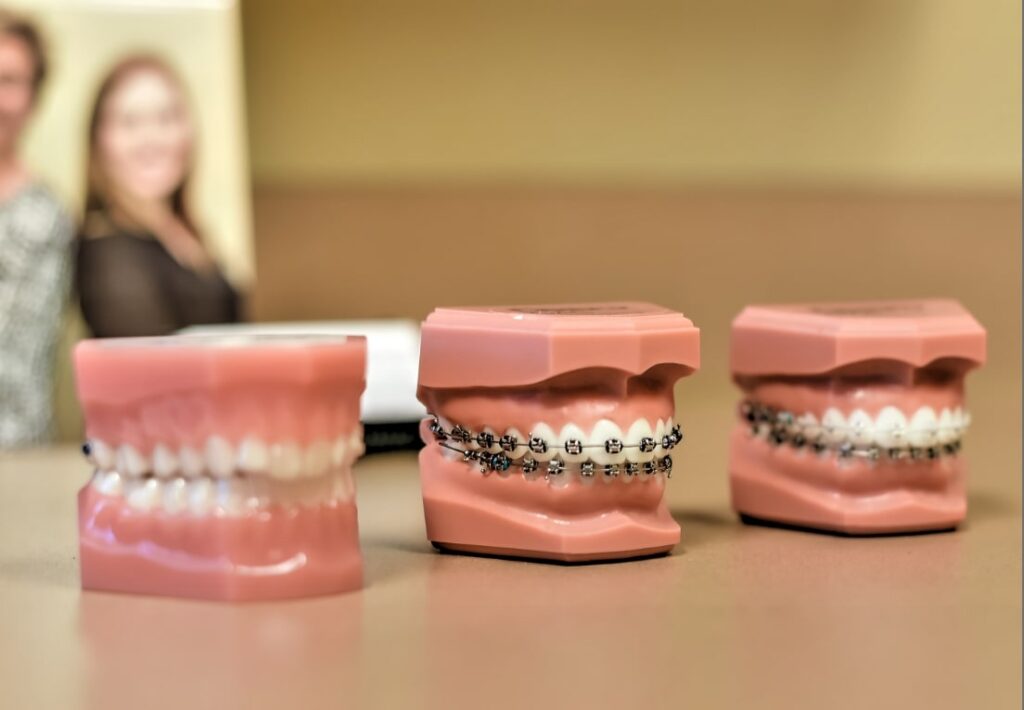Selecting the very best Cumming Orthodontics for Effective Braces and Aligners Solutions
Selecting the very best Cumming Orthodontics for Effective Braces and Aligners Solutions
Blog Article
Comprehensive Guide to Orthodontics Treatments for Remedying Oral Imbalances
In the realm of orthodontics, the journey to achieving a completely aligned smile entails a myriad of treatments tailored to correct dental imbalances. From standard dental braces to invisible aligners and even medical choices, the field of orthodontics supplies a series of options to resolve varying levels of dental abnormalities. Comprehending the complexities of each treatment, including their mechanisms, benefits, and prospective disadvantages, is vital in making educated choices about one's orthodontic treatment. As we navigate through the comprehensive overview to orthodontic procedures for fixing dental misalignments, the complex details of each method will certainly unfold, dropping light on the path toward a harmonious and functional oral positioning.
Orthodontic Procedures Introduction

Regular changes and surveillance are essential parts of orthodontic therapy to make certain progression is on track and to make any needed adjustments along the way. By going through orthodontic treatments, patients can not just achieve a straighter grin but additionally improve their total dental health and wellness and feature.
Typical Dental Braces: How They Function
When taking into consideration orthodontic therapies for oral imbalances, typical braces stand apart as a reliable approach for fixing teeth positioning. Conventional dental braces include brackets, cables, and bands that interact to apply continual stress on the teeth, slowly moving them into the preferred positioning. The brackets are affixed to the teeth using a special adhesive, and the cords are threaded via the brackets. By adjusting the stress of the cords, orthodontists can manage the instructions and force put on each tooth, directing them right into correct alignment with time.
As stress is applied to the teeth via the dental braces, the bone bordering the teeth is improved to support the new tooth positions. Patients will require routine modifications at the orthodontist's workplace to make sure the dental braces continue to use the correct stress for efficient teeth movement.
Undetectable Aligners: Disadvantages and pros
These clear, customized trays are basically unnoticeable when put on, making them an enticing option for people seeking a much more cosmetically pleasing orthodontic treatment. Patients can eliminate the aligners prior to eating or cleaning their teeth, minimizing the threat of food obtaining stuck in the home appliance and streamlining the cleansing process.

Surgical Orthodontic Options
Surgical treatments in orthodontics present feasible options for resolving complicated oral imbalances that might not be effectively dealt with through conventional orthodontic treatments. While standard dental braces and unnoticeable aligners can fix numerous orthodontic concerns, certain instances need surgical intervention to attain ideal results. Surgical orthodontic options are usually recommended for extreme malocclusions, significant jaw discrepancies, and instances where the underlying bone framework needs alteration to achieve appropriate placement.
One common medical orthodontic procedure is orthognathic surgical treatment, which entails repositioning the jaws to remedy functional issues such as difficulty talking or chewing. This surgical procedure is frequently executed in collaboration with an orthodontist that assists line up the teeth prior to and after the procedure. Surgical orthodontics may likewise involve treatments to subject influenced teeth, get rid of excess periodontal tissue, or reshape the jawbone to develop an extra unified facial account.
Prior to considering surgical orthodontic options, individuals go through a comprehensive assessment to figure out the necessity and possible advantages of such treatments. cumming invisalign. While surgical procedure may seem complicated, it can substantially boost both the function and aesthetics of the smile in instances my explanation where standard orthodontic therapies drop short
Retainers and Post-Treatment Care

Post-treatment treatment includes following the orthodontist's instructions diligently. This may include proper oral health methods, participating in follow-up appointments, and using the retainers as suggested. Failing to follow post-treatment treatment instructions can cause relapse, where the teeth slowly relocate back in the direction of their initial placements. Regular retainer wear, good dental health, and regular oral exams are essential for keeping the outcomes accomplished through orthodontic surgical treatment and ensuring the lasting security of the corrected oral alignment.
Conclusion
To conclude, orthodontic procedures supply numerous alternatives for fixing dental imbalances. Traditional braces make use of steel braces and wires to shift teeth right into appropriate alignment. Unseen aligners supply a more discreet choice but might not appropriate for all situations. Surgical orthodontic alternatives are readily available for much more severe imbalances. Retainers are generally used post-treatment to maintain the new positioning. In general, orthodontic procedures can effectively boost oral wellness and visual look.
As we navigate with the thorough overview to orthodontic treatments for correcting dental imbalances, the complex details of each approach will certainly unravel, shedding light on the course towards a unified and useful dental placement. - aligners
One of the most typical orthodontic treatments is the usage of dental braces, which consist of steel brackets and cables that apply gentle pressure to gradually move teeth into the desired setting.When taking into consideration orthodontic treatments for oral misalignments, standard braces stand out as a tried and true method for dealing with teeth positioning. Additionally, unseen aligners may not be suitable for intricate orthodontic problems that call for even more considerable teeth motion, as they are commonly suggested for light to modest cases. Retainers are tailor-made orthodontic tools designed to hold teeth in their corrected settings after the completion of orthodontic therapy.
Report this page